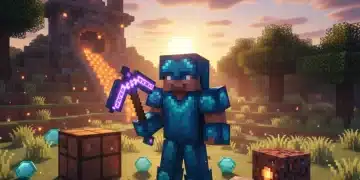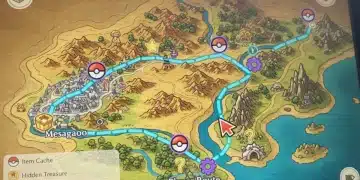Minecraft Biome Guide: Finding Rarest Resources in 2025
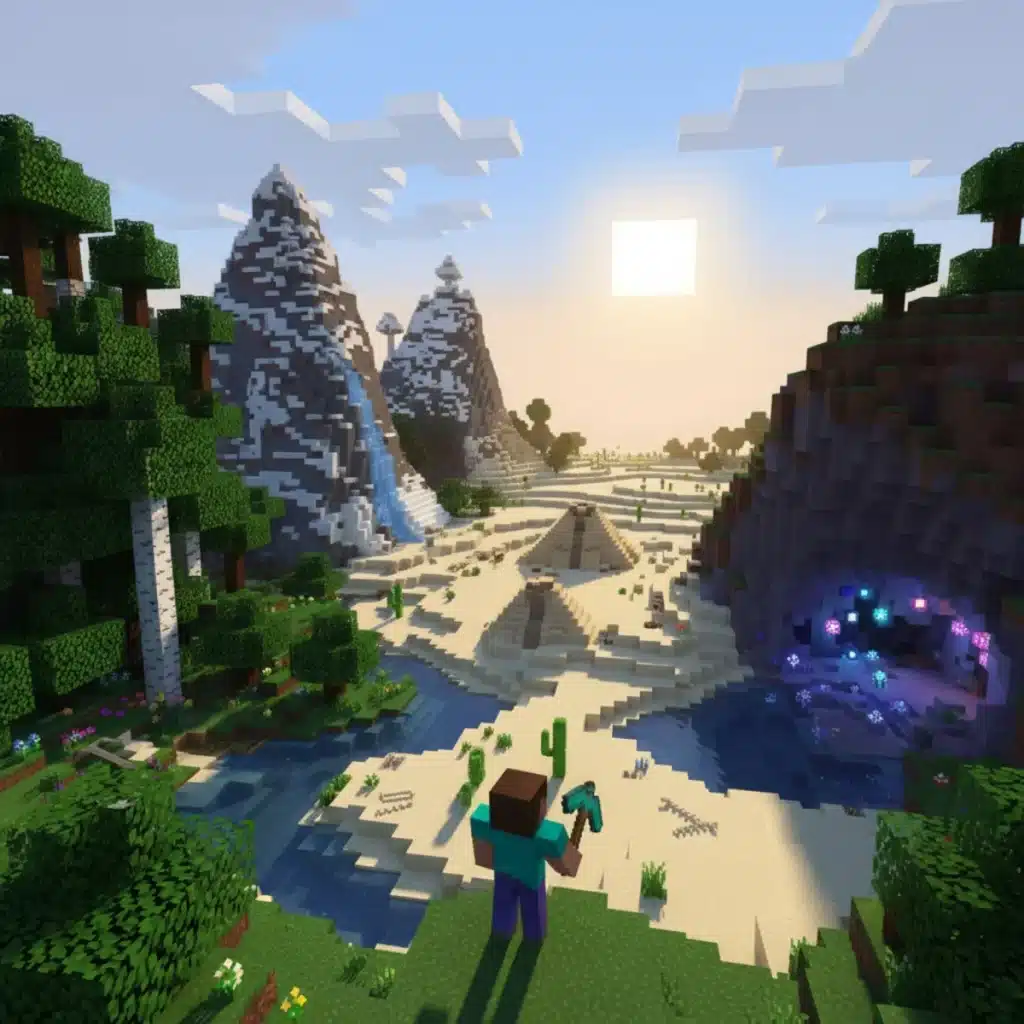
Advertisements
This comprehensive guide details the optimal biomes and strategies within Minecraft for efficiently locating the game’s rarest and most valuable resources in 2025, maximizing your in-game efficiency.
Anúncios
Embarking on a new adventure in the expansive world of Minecraft often means seeking out the most valuable materials to craft powerful tools, impenetrable armor, and magnificent structures. This Minecraft Biome Guide: Finding the Rarest Resources in 2025 is your essential companion, meticulously detailing where and how to unearth the game’s most coveted items. Are you ready to dive deep into the biomes and emerge with treasures beyond your wildest blocky dreams?
Understanding Minecraft’s Biome Diversity
Minecraft’s world is a tapestry woven from countless biomes, each with its own unique flora, fauna, and, crucially, resource distribution. From the towering peaks of jagged mountains to the silent depths of the ocean, understanding these environments is the first step toward becoming a master resource gatherer. The year 2025 brings with it subtle changes and continued relevance to biome-specific resource generation, making this knowledge more critical than ever for efficient gameplay.
Anúncios
Biomes aren’t just pretty backdrops; they are key indicators of what lies beneath the surface. For example, specific biomes are far more likely to harbor certain rare ores or generate structures that contain unique loot. Ignoring this fundamental aspect of world generation is akin to searching for a needle in a haystack without knowing what a needle looks like.
Overworld Biomes and Their Hidden Gems
The Overworld, the primary dimension of Minecraft, hosts an incredible variety of biomes. Each offers distinct advantages for resource accumulation, from the abundant wood in forests to the unique plants in swamps. Knowing which biomes to prioritize for different resources can save countless hours of aimless wandering.
- Lush Caves: These vibrant underground biomes are excellent for finding glow berries, moss blocks, and occasionally amethyst geodes. Their open structure also makes exploring for diamonds and other common ores slightly easier due to better visibility.
- Dripstone Caves: While challenging to navigate due to falling stalactites and stalagmites, dripstone caves are prime locations for large veins of copper and iron. They can also hide deepslate layers, which are rich in diamonds at lower Y-levels.
- Jagged Peaks/Snowy Slopes: High-altitude biomes often expose large amounts of emerald ore, especially near the surface. These biomes are also great for iron and coal, often found in exposed cliff faces.
Ultimately, a keen eye for biome characteristics combined with strategic exploration will significantly boost your resource yields in the Overworld. Don’t underestimate the power of a well-chosen starting location or a planned expedition into a specific biome.
The Nether: A Realm of Unparalleled Riches
The Nether is perhaps the most dangerous yet rewarding dimension for rare resources. It’s home to some of Minecraft’s most sought-after materials, including ancient debris, which is essential for crafting Netherite. Navigating this fiery landscape requires preparation, courage, and a deep understanding of its unique biomes.
Unlike the Overworld, the Nether’s biomes are fewer but distinct, each presenting its own challenges and opportunities. From the fiery Basalt Deltas to the eerie Warped Forests, each step into this dimension holds the promise of great wealth or imminent peril. Players must be equipped for harsh conditions, including lava lakes and aggressive mobs.
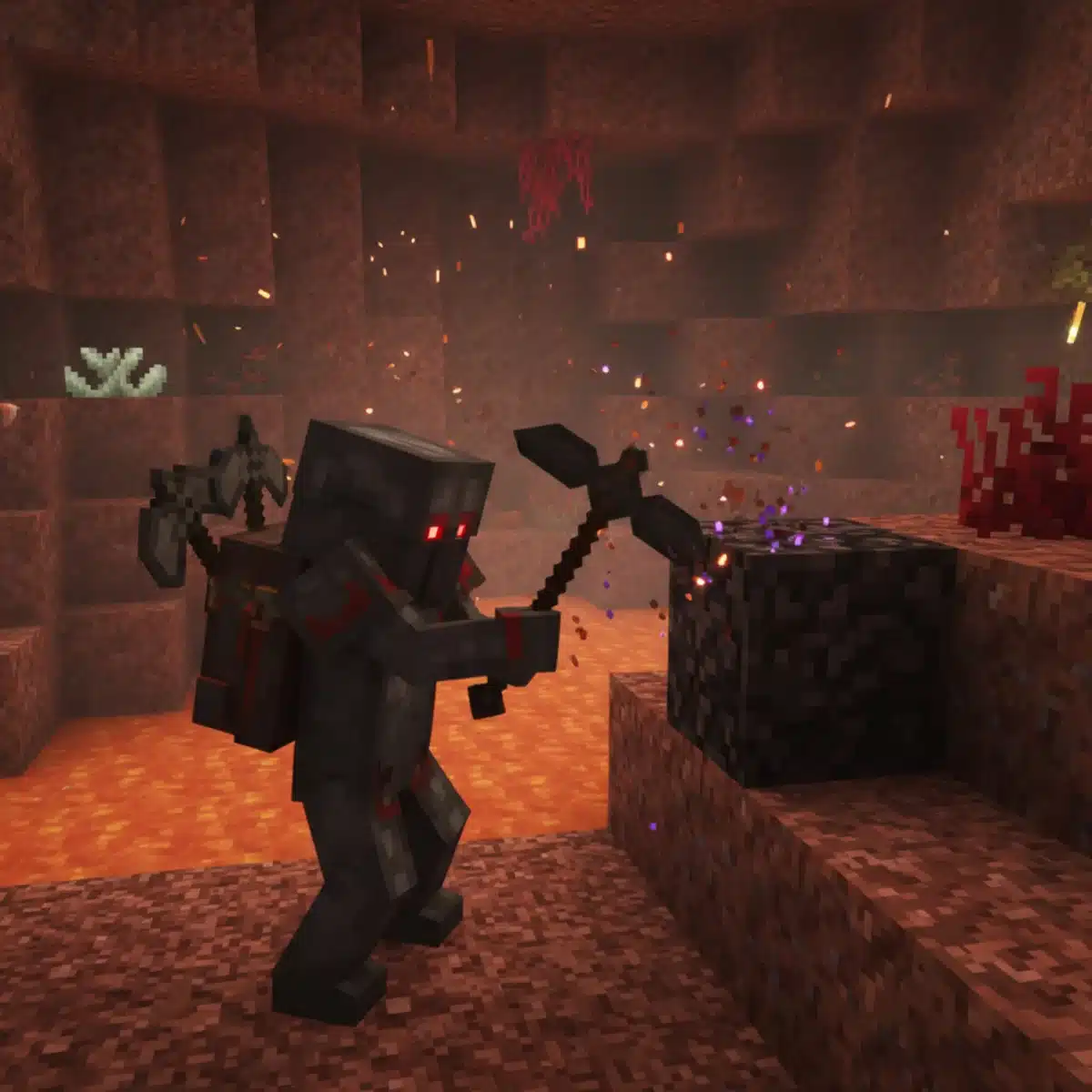
Ancient Debris: The Holy Grail of the Nether
Finding ancient debris is the primary objective for many players venturing into the Nether. This elusive ore, when smelted into Netherite scraps and combined with gold, creates Netherite ingots—the strongest material in the game. Its rarity makes it a true prize, and specialized strategies are often employed to find it.
- Blast Mining in Basalt Deltas: Basalt Deltas, with their dense, blast-resistant rock, are ideal for TNT mining. Ancient debris is found at Y-levels 8-22, with Y-level 15 being the most common. Clearing large areas with TNT is an efficient, albeit resource-intensive, method.
- Strip Mining in Soul Sand Valleys: While less efficient for ancient debris directly, Soul Sand Valleys can be safer due to fewer lava flows. Strip mining at Y-level 15 remains a viable, albeit slower, option across all Nether biomes.
- Fortress Raids: Nether Fortresses, found across various Nether biomes, can contain chests with ancient debris or Netherite scraps. While not a primary source, they offer a chance at this rare material alongside other valuable loot.
Mastering ancient debris acquisition is a cornerstone of late-game progression. The investment in explosives and time in the Nether is always worth the reward of superior gear.
The End: Shulker Shells and Elytra
The End dimension, home to the Ender Dragon, is the final frontier for many Minecraft adventurers. Beyond the initial battle, the outer End islands hold two of the most game-changing items: shulker shells and the elytra. These resources significantly enhance inventory management and travel, making further exploration and building far more convenient.
Reaching the outer End islands requires defeating the Ender Dragon and finding an End gateway. Once through, the vast, empty expanse dotted with End cities awaits. These structures are the only natural source of shulkers and elytra, making their discovery a high priority for advanced players.
Locating End Cities and Their Treasures
End cities are towering structures generated randomly on the outer End islands. They are often protected by shulkers, unique mobs that shoot homing projectiles. Defeating shulkers yields shulker shells, which are crafted into shulker boxes—portable storage containers that retain their contents when broken.
- Using Elytra for Exploration: Once you find your first elytra, subsequent exploration of the End becomes exponentially faster. With rockets, players can glide vast distances between islands, quickly spotting new End cities.
- Pearl Throwing: Before obtaining an elytra, throwing Ender pearls is the primary method for traversing the void between End islands. Ensure you have plenty, as falling into the void means instant death and loss of all items.
- Checking for End Ships: Some End cities generate with an attached End ship. These ships are guaranteed to contain an elytra in a display frame, making them the ultimate prize for End explorers. They also often have chests with valuable loot.
The journey to the End and the subsequent hunt for End cities is a true test of a player’s skill and preparation. The rewards, however, are unparalleled, offering tools that redefine the Minecraft experience.
Diamonds: Still a Player’s Best Friend
Despite the introduction of Netherite, diamonds remain a foundational resource in Minecraft. They are essential for crafting the diamond pickaxe, which is required to mine obsidian and ancient debris. Finding diamonds efficiently is a skill every player needs to master, especially in the evolving landscape of 2025’s world generation.
Diamonds are found deep underground in the Overworld, primarily between Y-levels -58 and -64. While they can appear in any biome, certain mining techniques and environmental factors can influence your success rate. Understanding these nuances can significantly reduce the time spent searching.
Optimal Diamond Mining Strategies
Several methods exist for mining diamonds, each with its own advantages and disadvantages. The most effective strategies combine efficiency with safety, ensuring you maximize your haul without unnecessary risks.
- Strip Mining: This classic method involves digging long tunnels at a specific Y-level. For diamonds, Y-level -59 is often recommended, as it places you just above the lava lakes, allowing you to see through the ceiling of the pools without falling in. Digging two-block high, one-block wide tunnels with two blocks between each tunnel is efficient.
- Cave Exploring (Deepslate Layers): The introduction of large cave systems means that exploring natural caves, particularly those that reach deep into the deepslate layers, can be a surprisingly effective way to find exposed diamond veins. Lush caves and dripstone caves are particularly good for this.
- Branch Mining: Similar to strip mining, but involves creating a central tunnel with smaller branches extending outwards. This method is excellent for covering a large area at optimal diamond-generating Y-levels.
Regardless of the method chosen, always bring plenty of torches, a water bucket for lava, and multiple pickaxes. Fortune enchantments on your pickaxe will also dramatically increase your diamond yield, making it a worthy investment.
Amethyst Geodes and Copper: New Age Resources
While ancient debris and diamonds hold legendary status, newer additions like amethyst and copper have become increasingly important for crafting and building. Amethyst offers unique decorative blocks and serves as a component for crafting spyglasses and tinted glass. Copper, on the other hand, is versatile for building, lightning rods, and the new crafter block.
These resources, while not as difficult to find as ancient debris, have specific generation patterns that make targeted searching highly effective. Knowing where to look for them can save you time and provide valuable materials for your creative projects.
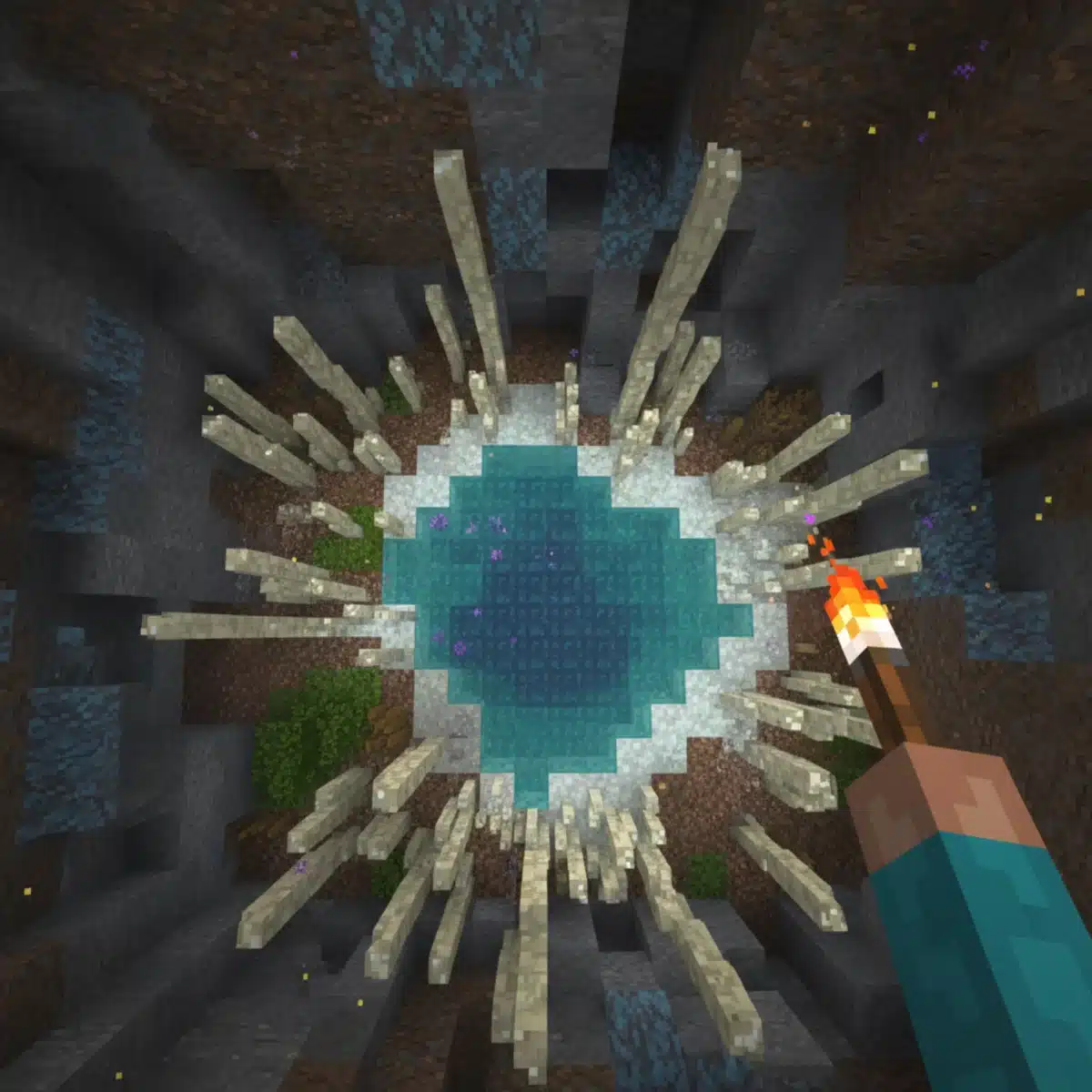
Where to Find Amethyst and Copper
Amethyst geodes and copper veins are found in specific locations and depths within the Overworld, making them relatively predictable to locate once you know the patterns.
- Amethyst Geodes: These spherical structures generate underground in any Overworld biome, typically between Y-levels 0 and 70. They are characterized by an outer layer of basalt, a middle layer of smooth basalt, and an inner layer of calcite, encasing amethyst blocks and clusters. Lush caves often intersect geodes, making them easier to spot.
- Copper Ore: Copper is found abundantly in dripstone caves and lush caves, but can generate in any Overworld biome. It’s most common between Y-levels 48 and 0, with a peak at Y-level 48. Mining in these specific cave biomes or strip mining at these levels will yield significant amounts of copper.
Both amethyst and copper add new dimensions to Minecraft’s crafting and building mechanics. Being able to reliably source them ensures you can experiment with all the latest features and designs.
Advanced Resource Gathering Techniques for 2025
Beyond simply knowing where to find resources, mastering advanced gathering techniques can dramatically boost your efficiency. The year 2025 continues to emphasize smart play, utilizing game mechanics to your advantage, whether through optimized mining or automated farms. These techniques often require initial investment but pay off tenfold in the long run.
From maximizing enchantment benefits to setting up complex redstone contraptions, advanced methods turn resource gathering from a chore into a streamlined process. This section explores some of the most impactful strategies for seasoned players.
Maximizing Efficiency and Automation
Efficiency isn’t just about speed; it’s about getting the most out of every action and, where possible, letting the game do the work for you.
- Enchantments: Fortune III on a pickaxe is indispensable for increasing diamond, redstone, lapis lazuli, and coal yield. Silk Touch allows you to pick up fragile blocks like glass or mushroom blocks, and also allows you to harvest entire amethyst clusters. Efficiency V speeds up mining significantly.
- Villager Trading: Establishing a robust villager trading hall can provide access to rare enchantments, diamonds, and other valuable items without direct mining. Librarian villagers, especially, can offer Mending and other high-tier enchantments for emeralds.
- Automated Farms: From iron farms that generate endless iron ingots to mob farms that provide experience and rare drops, automation is key for late-game resource management. Consider building farms for specific mob drops (e.g., slime balls from slime farms, specific mob heads from mob grinders) or even tree farms for wood.
- Beacon Usage: Beacons provide powerful status effects like Haste II, which drastically increases mining speed. Placing a beacon at your primary mining site can transform your resource gathering rate.
By integrating these advanced techniques, players can move beyond basic resource acquisition and focus on their grander creative and exploratory ambitions within Minecraft.
| Key Resource | Optimal Biome/Location |
|---|---|
| Ancient Debris | Nether (Y-level 15, especially Basalt Deltas) |
| Diamonds | Overworld (Y-level -59, Deepslate Layers) |
| Shulker Shells/Elytra | The End (Outer Islands, End Cities/Ships) |
| Amethyst | Overworld (Y-levels 0-70, Amethyst Geodes) |
Frequently Asked Questions About Minecraft Resources
Ancient debris remains arguably the rarest and most valuable resource in Minecraft in 2025. It’s exclusively found in the Nether at low Y-levels and is crucial for crafting Netherite, the strongest material for tools and armor, making it highly sought after by all players.
Diamonds are most commonly found in the Overworld’s deepslate layers, specifically between Y-levels -58 and -64. While they can appear in any biome, strip mining at Y-level -59 across various biomes, especially within large cave systems like lush or dripstone caves, is highly effective.
An Elytra can only be obtained from End ships, which are generated alongside some End cities in the outer islands of The End dimension. After defeating the Ender Dragon, you must find an End gateway and explore the outer islands to locate these rare structures.
Yes, Amethyst and Copper have become increasingly important. Amethyst is used for decorative blocks, spyglasses, and tinted glass. Copper is versatile for building, crafting lightning rods, and the new crafter block, offering both aesthetic and functional uses in advanced builds.
For rare resources, Fortune III is paramount as it increases the drop rate of diamonds, coal, redstone, and lapis lazuli. Efficiency V significantly speeds up mining, while Mending extends tool durability, reducing the need for constant repairs and allowing longer mining expeditions.
Conclusion
Mastering resource acquisition in Minecraft is an ongoing journey, constantly evolving with new updates and player-driven strategies. This Minecraft Biome Guide: Finding the Rarest Resources in 2025 has aimed to equip you with the knowledge needed to efficiently locate the game’s most coveted items, from the fiery depths of the Nether to the ethereal outer islands of The End. By understanding biome diversity, optimizing your mining techniques, and embracing advanced automation, you’ll transform your gameplay, allowing you to focus on the boundless creativity and exploration that Minecraft truly offers. May your pickaxe be sharp and your inventory always full of treasures!




